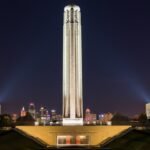Hashima Secret Island: Japan’s Abandoned City
Hashima Secret Island : Coal Mining and the History of the Island of Hashima
A concrete island with houses and not a tree. It is the gloomiest place on Earth. Is it real? It is. Welcome to Hashima! The island of Hashima is 9 miles from Nagasaki. There are hundreds of islands in Nagasaki prefecture. Hashima looks like bare rocks with no plants, unlike others, which are green and covered with forests. They were on them. You can see that the rocks are empty if you look closer. Coal mining is the key to the island’s secret. Coal was taken from the ocean’s bottom to the surface near Hashima for its century-long history. The locals left the island in 1974. The people of Takashima gathered coal close to the surface for many centuries. As legend has it, they used it to heat their houses and called it goheita. It found its fuel qualities. Takashima island was part of feudal lands during the 18th century. They saw the profit that coal mining brought and took control of all the bargains in their own hands. Coal mining became the basis of the local economy after Islanders served as a work force. Nagasaki became an international port and a way station for foreign commercial cargos in the 19th century. Western countries were replacing their sailing ships with steamers. Coal was growing. The territory of coal mining was widened by it. They asked Thomas B. Glover for help. A miner had to use a twibill to cut coal from an open surface. They would just move to another place when coal was exhausted or unsafe. A vertical coalmine was brought to the island by Glover. Modern coal mining began in Japan in 1869 after the drifters reached the depth of 150 ft.
Hashima, Japan: A History of the Industrial Era
The treasury of Nagasaki was filled with foreign currency after Takashima coal. A chain of lifeless rocks called Hashima became a coal island because Fukahori decided to develop reserves on the neighboring islands. The island was sold at the end of the 19th century to a shipping enterprise. The new owner made tall fortifications and built dwelling houses for workers, which made the island look like a battleship gliding on the waves. The resemblance was so strong that a reporter called it. The island of ships is called Gunkanjima. The official name was displaced by the nickname. The population of Hashima in 1916 was 3000 people. The concrete residential complex was built to make up for the lack of living space. It was the largest concrete building in Japan. Ingalls in Cincinnati was the first big concrete building in America. The new architectural era in Japan was a big part of Hashima’s building. There is a house built at the south. Private apartments were given to workers and their families. There was a 106 sq ft room with a tatami. The bathroom, kitchen and lavatory were open to the public. An even bigger residential complex was built in the center of the island. It was the largest in Japan, with 9 stories from the ocean side and 3 from the rock side. It was only the beginning. Thirty concrete houses were built on the island. By 1941, the yearly production of coal in Hashima was 410,000 tons. kept growing. In 1959 the population of Hashima was over 5,000. Most of the dwelling houses are built on the rocky slopes of the island. The majority of the island’s surface was used for facility buildings.
Hashima: From Boom to Bust
The population density on Hashima was 835 people perhectare of the whole island or 1400 people perhectare of the residential area. The highest density of population ever recorded is indicated by these figures. Warabi is the bedroom district of Tokyo and the most densely populated city. 141 people perhectare. Between residential houses there were a primary school, a secondary school, a playground, a gym, a cinema, bars, restaurants, and a Buddhist church. It would take less than 10 minutes to walk from one end of the island to the other. Hashima citizens had no umbrellas as the mazes of corridors and stairs connected all the dwelling houses and served as a transport system. Housing, electricity and water were free for workers, but all the residents had to pay. There are public works in the territory. The community depended on the outer world for food, clothes and other articles of commerce. Before Hashima was connected with the land in 1957, fresh water had to be brought to the island. There was a threat to living on Hashima if a storm stopped the sailing for more than a day. There was no ground or plants in this place. Coal ash was laid around a bare rock. In 1963. As part of a green campaign, Hashima residents brought soil from the mainland and made gardens on the roofs. The island looked a bit less gloomy after they started growing vegetables and flowers there. It wasn’t for long. Coal was admitted as an ecological dirty fuel at the end of the 1960s in Japan. Coal was the basis of national energy programs. The government shut down coal mines around the country. The harsh climate made coal mining difficult on the island. They had to restore the fortification walls all the time because of the floods. It was a risk for people living on the island. The streets of Hashima were turned into a river by waves as high as 30 ft. The staff on Hashima was reduced by the company. The company closed the mine on January 15, 1974 after 2000 people left the island. The residents of Hashima left the island in 3 months.
Hashima: From Industrial Hub to Ghost Island
It produced over 16 million tons of coal over the course of 84 years. Hashima is a forgotten island that looks like a lighthouse guarding the entrance to Nagasaki bay. Climate influence has led to the modern state of the island. All the buildings looked like they had been hit by a military attack, but nobody tried to destroy it. The state of the island warns about the importance of wise forecasting. The society gets too far away from nature. The whole world is possible. It looks like this after the end of exploitation of resources. For a long time, visits to the island were forbidden and deported from Japan. Thieves would come to Hashima to look for things they could sell. Things from the ghost town were in high demand. The island gained a lot of popularity in the 21st century, especially among those who like ruins. It was officially opened for journalists in August 2005 after attracting tourists from the West. In. Hashima (Gunkanjima) island was included in the list of UNESCO world heritage as a monument to a whole period of Japanese history. The Nagasaki prefecture wanted to make a museum of the island and open it to tourists. The project required a lot of resources and wasn’t put into practice. There are regular steamer cruises to the island from Nagasaki. Only the part of the island that is specially equipped is open to tourists. It is considered safe for visits. Attempts to leave the tourist route and search the island alone are dangerous. The island was used as a location for movies. The location for the TV series “Life after people” was a living example of what happened to a city 35 years ago. Some of the most thrilling and sinister scenes of Skyfall were filmed here in 2011. Would you like to see what happens to cities without people? Let me know. In the comments! If you learn something new today, give this video a like and share it with a friend. Just yet, don’t go uninhabiting. We have over 2,000 videos for you to watch. Click on the left or right video to watch it. Stay on the bright side of life.









